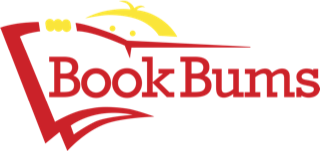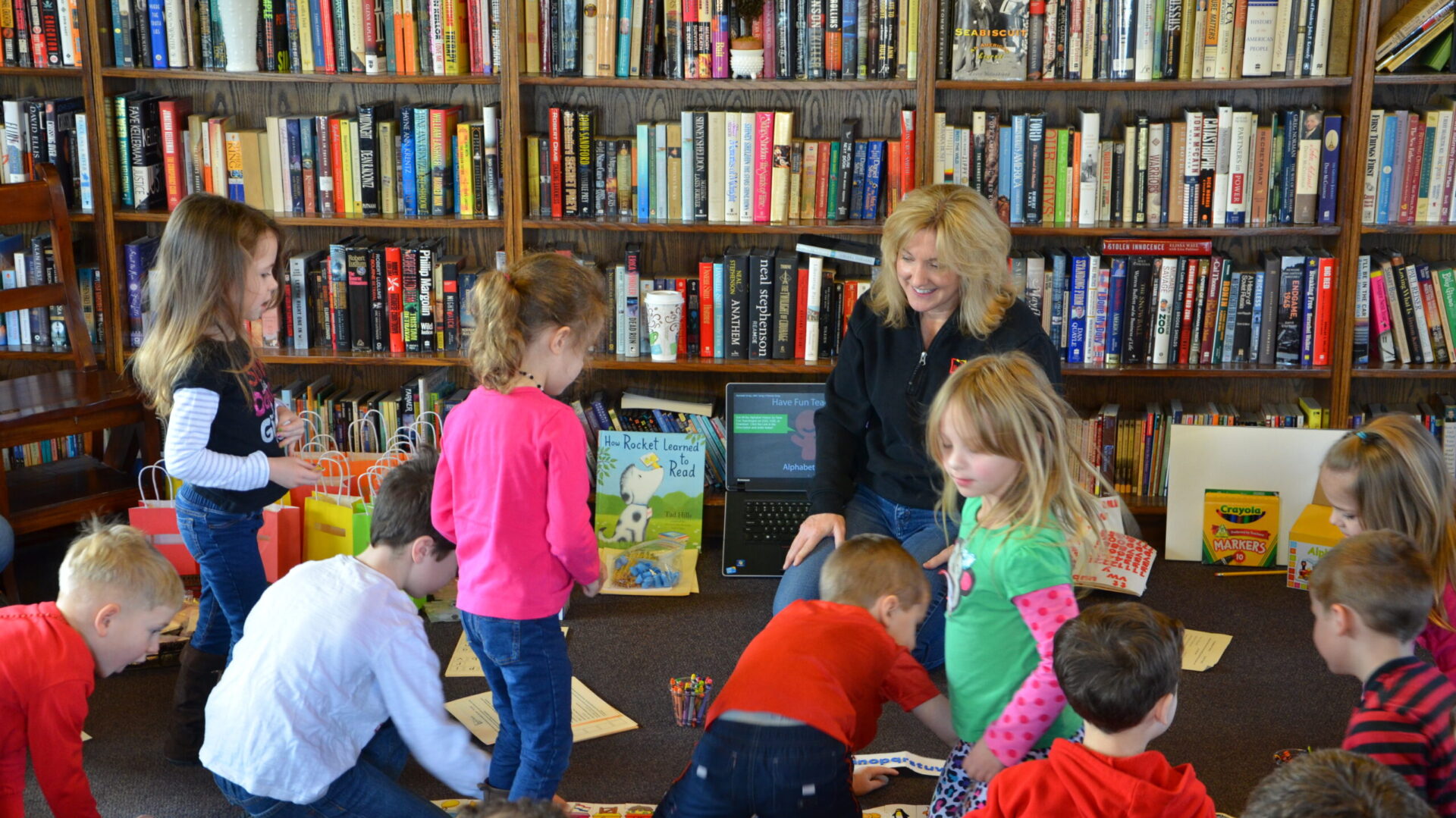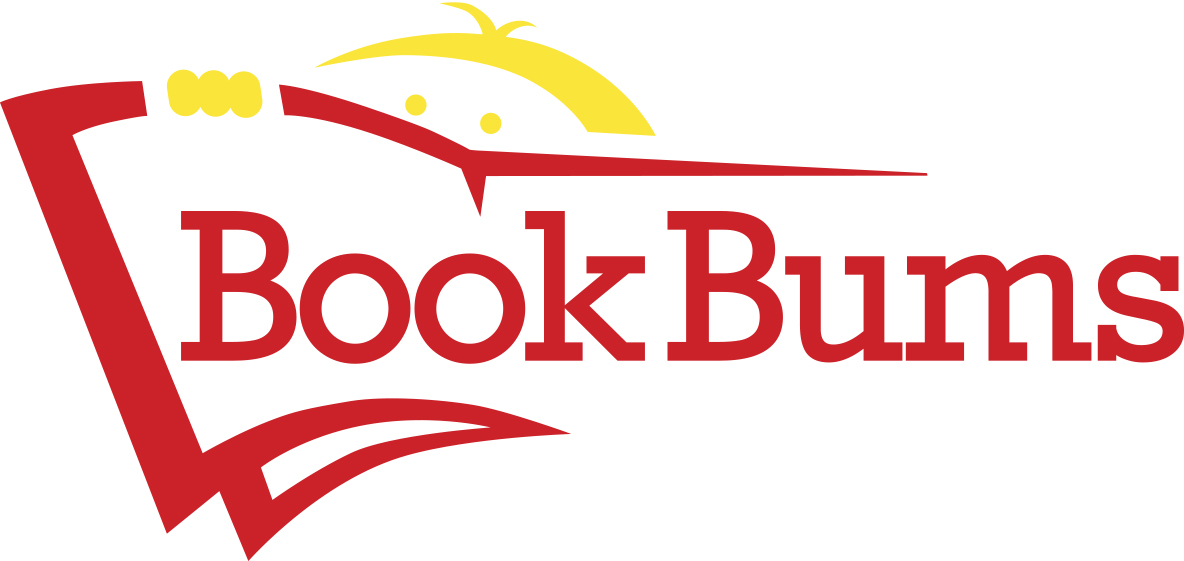
Hello Book Bums families!
This week's newsletter has everything you need to get in the Thanksgiving spirit. We're sharing a host of fun tools, crafts, and games to practice everything from place settings to thank-yous to good manners. We've also included a holiday poem that may surprise you. (Did you think it went with a different holiday?)
We are so thankful for you our friends, neighbors, and fellow readers and learners! We wish you a safe, healthy, bountiful holiday.
Bookbums.com is an Amazon Associate; We earn from qualifying purchases. This means that if you click on a link to Amazon.com and make a purchase, We may earn a small commission at no extra cost to you. We do recommend the products. Feel free to find them by other means.
Word of the Week
etiquette (ett-ih-kit) noun/person, place, or thing - rules for good behavior and manners
When traveling, it is good to learn about the etiquette of the country you're visiting, so you don't make an embarrassing mistake.
Literary Calender
• November 18 is High Five a Librarian Day.
• Here is one librarian's answer to why they deserve a high five: "Because librarians are hard-working, underpaid, often undervalued book matchmakers fighting censorship, and promoting the heck out of literacy."
"Google can bring you back 100,000 answers,
a librarian can bring you back the right one."
- author Neil Gaiman
From our Bookshelves
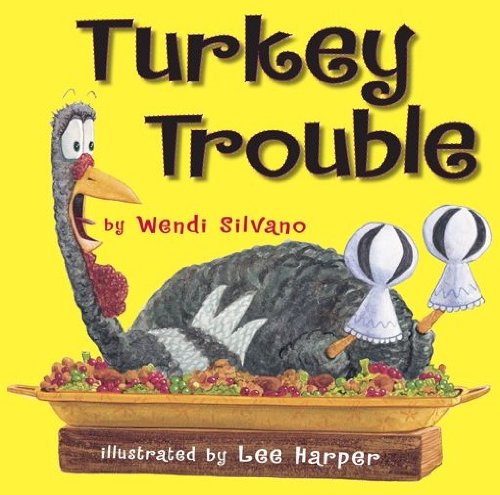
Turkey realizes he’s in trouble. He’s supposed to be the main course for Thanksgiving dinner! But turkey has an idea that just might spare him from an untimely demise. He decides to disguise himself by dressing up like other animals on the farm. His costumes weren’t too bad—
except that he didn’t really fool anyone. Turkey Trouble by Wendi Silvano is a fun story about a clever turkey who actually finds a way to survive Thanksgiving!
Tips for Raising Readers and Writers
Tips for Teaching Readers and Writers
At Book Bums, we share with our families that we have a code-based language. If we want children to read and spell well, we must equip them to navigate that code.
Kids don’t have to memorize lots and lots of random words. They should not use pictures or context clues to guess words. They should not be encouraged to memorize words and be coached to say them “in a snap.”
Here’s what we do . . .
We decode words.
We labor, moving from left to right, making the sounds associated with letters and letter combinations. We continually apply what we’re learning about how words work. Eventually, through a process known as orthographic mapping, most every word will be known on sight, but for that to happen, we must begin by making the sounds we see in words. It’s a No Guess Zone.
That’s true! We have 26 letters in our alphabet, there are about 44 sounds, and we can spell those sounds 80+ ways. Learning just over 80 ways to spell sounds is MUCH easier than memorizing the 20-30 thousand words we will each use throughout our lifetimes.
BUT . . . then we have words with o-u.
First we teach kids that o-w says /Ow!/ or /Oh!/. We practice decoding lots and lots of words with o-w such as cow, snow, glow, and town. Then we say, “O-u AND o-w can both say /Ow!/ We read lots of words with o-u such as pout, sour, pound, and south.
*Note that u (/you/) and w (/double you/) both say /you/ in their names.
Some Spanish countries call a w doble ve which means “double v.” They are noting how a w looks. In English, we’re noting how a w acts. A w can double as a u.
That’s interesting.
But then . . . o-u gets an attitude.
We use this meme. We shake our fists and say, “Oh . . . you! (dirty, rotten scoundrel)

Because o-u says . . . just about anything it darn well pleases!
This is one of the only letter combinations that, I’ll admit, can be maddening.
O-u typically says /ow/, but it also says:
• /ew/ as in through
• /oo/ as in could, would, and should
• ŏ/ as in thought
• ŭ/ as in trouble
• ō/ as in though
And the sound for o-u can be altered by r’s, too. O-u-r says:
• /r/ as in journey
• /or/ as in your
Look at these words: tough, though, through, thought, throughout, thorough
O-u is a disaster!
To help your kids navigate some of the trickiest o-u words, we’re providing a downloadable PDF so you can play Memory. We have to “just memorize” some wacky o-u words. So, we teach kids the words, providing tips that may help them remember which word is which, and we also teach them how to remember how to remember.
To prepare for playing the game, print the PDF, cut it down the center, and then cut between each word so you end up with twelve rectangular cards, two of each word. Then glue each word card onto slightly larger pieces of construction paper so kids can’t see through the word cards.
To play the memory game, arrange all twelve word cards into a 4 x 3 array with four rows and three cards in each column. The cards should be face down. Invite your child to flip over one card and try to decide what the word says. You’ll be offering a lot of instruction, here. Simply share what sounds you see and how we can remember what the word says. (e.g., For tough, I teach kids a cheer we used to do in high school. T-O-U-G-H. Say what? Get tough!)
We never teach kids to name letters at Book Bums. We make the sounds. Except for these words. Oh, you . . .

Then, have your child turn over another card and determine if it’s a match. Again, provide tips that will help your child recognize this word the next time. When a match is made, those word cards are removed from the grid. Continue play until all six words have been read and matched.
Make this fun for your kids so they want to play again and again. Our students often learn these words very quickly—within just about 15 minutes of one tutoring session. It works!
Tips for Families
At Book Bums, we used to host a popular workshop called No Turkeys at the Table! In that workshop, kids gathered to learn all sorts of things like how to make a festive placemat, how to fold a fancy napkin, how to set the table (what goes where), and how to avoid foul (Or is it fowl?) table manners at Thanksgiving or any formal meal.
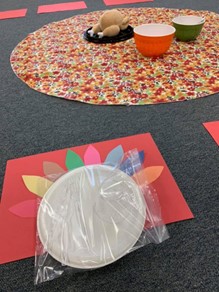
I thought that you might like to share some fun-focused pre-Thanksgiving etiquette tips with your kids, so I’m including a bit of what we did in those workshops, here.
First, we created a placemat. I precut large brown circles and long colorful strips of paper. The kids cut the paper strips so they resembled feathers, and then they glued them onto the back of the brown circle to create their own turkeys. They glued those turkeys onto a large (12” x 18”) piece of construction paper to make a beautiful placemat.
Next, we learned how to properly set a table. I provided a cloth napkin, a plastic plate, cup, fork, knife, and spoon for each child; and I shared how each item should be arranged on their placemats. We did it together, then we put the items back in our baggies, and then I challenged them arrange their place settings on their own. Would you believe me if I told you that the kids enjoyed this very much?

Next, I shared a special napkin fold. I first demonstrated the fold with them watching, only. Then, they got their own napkins, and I walked them through, step by step, as they worked to master the fold. Next, we shook our napkins out, and we did it again. Before we knew it, the kids were expert napkin folders! I gave them a gift of one cloth napkin to keep, and they just loved it! Finally, we placed our napkins to the left of our plates, under our forks.
The best part is that this napkin fold features a slot that’s just the right size for a small “I’m thankful for you” notecard. We are Book Bums, after all, so we wrote one note to slide into the pocket of our beautifully folded napkins. I challenged the kids to make one card for each member of their families when they got home.
To make this learning fun, I made “turkey cards” and gave one to each child. As we pretended to eat our meal, I called out numbers. The students with the corresponding numbers had to do what their “turkey trouble” cards said to do. Everyone else’s job was to spot the turkey. This is such a fun way to remind kids to use respectful manners!
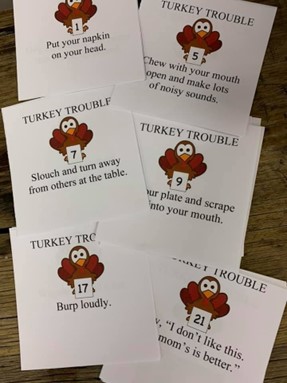
When every number had been called and all the faux pas had been addressed, we ended the session reminding everyone that the worst turkey move would be actually telling people when they miss the mark.
We never want to make someone feel small if they don’t know what we know about behaving respectfully at the dinner table.
Now, here’s something for the adults.
When you’re sitting down to eat a meal at a nice restaurant with several people, it can be tricky deciding which is your drinking glass and which belongs to your neighboring diner. Discretely make a b and d with your fingers and thumbs like this:

Your bread plate is on the left, and your drink is to your right. Now you know!
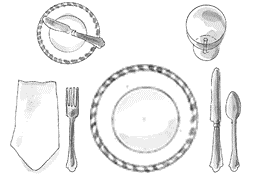
Pause for Poetry
Thanksgiving Day
by Lydia Maria Child
Over the river, and through the wood,
To grandfather's house we go;
The horse knows the way
To carry the sleigh
Through the white and drifted snow.
Over the river, and through the wood—
Oh, how the wind does blow!
It stings the toes
And bites the nose
As over the ground we go.
Over the river, and through the wood,
To have a first-rate play.
Hear the bells ring
"Ting-a-ling-ding",
Hurrah for Thanksgiving Day!
Over the river, and through the wood
Trot fast, my dapple-gray!
Spring over the ground,
Like a hunting-hound!
For this is Thanksgiving Day.
Over the river, and through the wood,
And straight through the barn-yard gate.
We seem to go
Extremely slow,—
It is so hard to wait!
Over the river and through the wood—
Now grandmother's cap I spy!
Hurrah for the fun!
Is the pudding done?
Hurrah for the pumpkin-pie!
Practical Grammar
Is it foul or is it fowl?
Fowl refers to specific types of birds such as chickens and game birds. It has only bird-related definitions.
Foul can mean offensive, morally detestable, a violation of rules, to make dirty, and to commit a violation against rules of play.
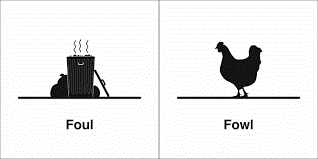
When we say, “Don’t use Fowl Manners at the Table,” we’re making a play on words. It’s a pun! A pun is a joke exploiting the different possible meanings of a word or the fact that there are words that sound alike but have different meanings.
Young kids don’t really “get” the nuances of puns, because they require a level of understanding about the world and about language. At around the age of five, kids might begin trying to tell jokes, but the only funny thing about them is how the kids think they are funny! It isn’t until around age six or seven that kids begin to understand plays on words. When they get puns, you know your children are on the verge of great academic gains.
If you know someone who would benefit from our newsletter or tutoring at Book Bums, please share this email with them! Thank you.
Copyright © 2024 Book Bums, All rights reserved
Our mailing address is:
7967 Cincinnati-Dayton Road Suite L
West Chester, OH 45069
